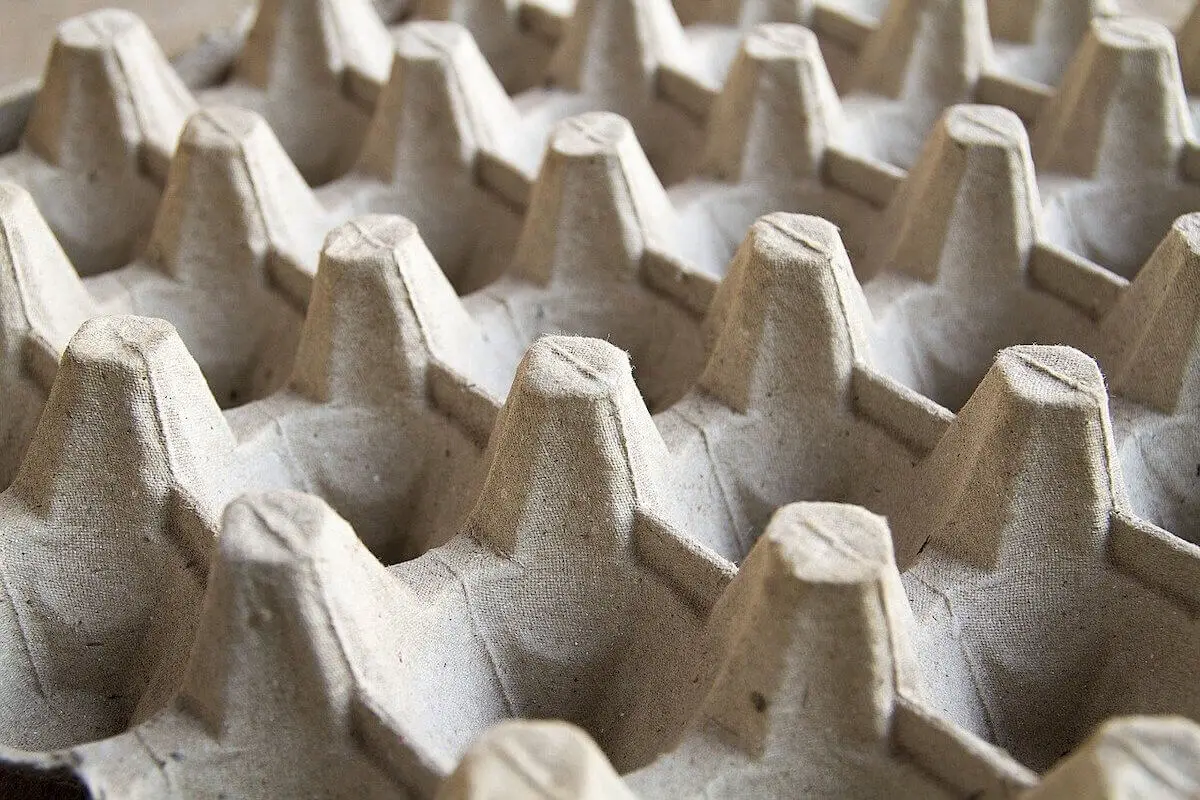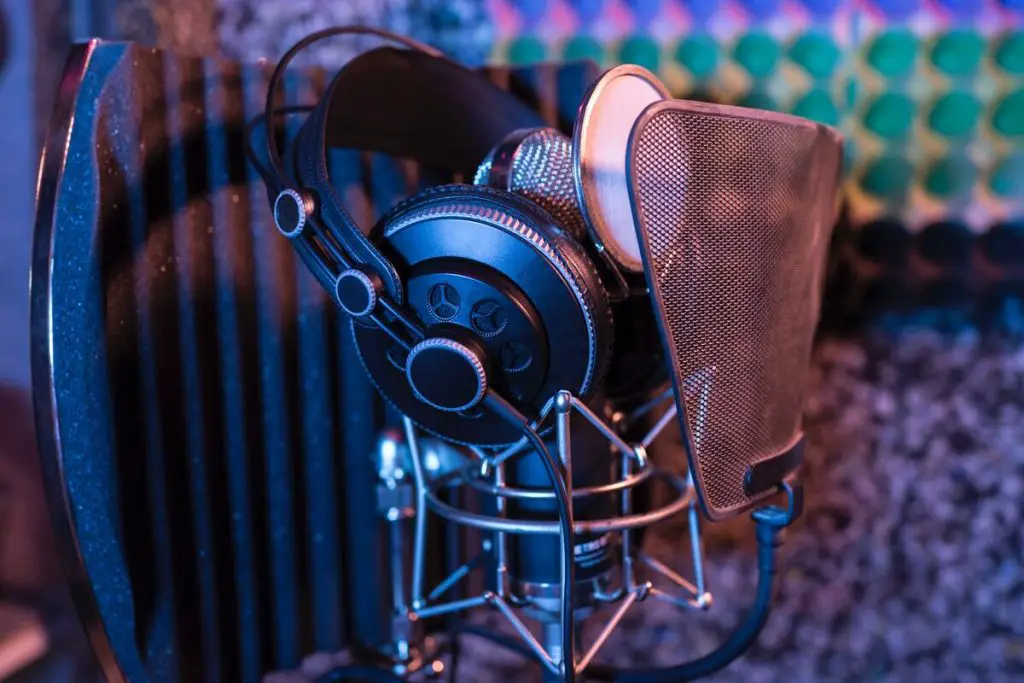You could have the best gear in the world and be the most skillful sound engineer, but a bad-sounding room will affect your recording. On top of that, it will also make your mixing and mastering process pretty useless, as the results you’ll hear on the monitors will hugely affect the environment. But can you treat a room’s acoustics with egg cartons?
This article teaches you how sound impacts your room and whether or not you can soundproof your room with egg cartons.
Can you soundproof with egg cartons? Egg cartons can not be used to soundproof a room because they are often made of thin cardboard, which means egg cartons do not effectively dampen noise. However, a small amount of noise reduction can be achieved using egg cartons by redirecting sound waves and absorbing them at the diaphragm.
How does your room impact your recording and monitoring?
Guitarists, bassists, keyboardists, or anyone who plugs their instrument directly into an audio interface (maybe through a D.I.) won’t experience these issues during the tracking process. However, the quality of the room will always affect the monitoring, mixing, and mastering processes.

When recording in an apartment or garage, it’s crucial to consider external noises that could interfere with your recordings.
When recording in an apartment or garage, it’s crucial to consider external noises that could interfere with your recordings. The honking of cars, barking dogs, or any other activities happening nearby can potentially spoil your tracks.
Another main issue is reflection. When sound waves hit a surface like a bare wall, they reflect, adding unwanted frequencies and odd echoes to your track. To avoid this, you should consider placing absorbing panels in strategic spots in your room. So, can you use egg cartons for this?
AKAI Professional MPK Mini MK3

AKAI Professional MPK Mini MK3
Can you soundproof with egg cartons?
While many home recorders utilize egg cartons as a makeshift sound-absorbing solution, their effectiveness is questionable. They don’t dampen external noise due to their thinness, and their sound absorption properties fluctuate notably with frequency, particularly failing at low frequencies. To achieve better results, it is advisable to cardboard or other materials to supplement the egg cartons.
However, it is important to note that addressing reflection issues requires a deeper understanding of the sound absorption coefficient. This coefficient measures a material’s ability to absorb specific frequencies. In the case of egg cartons, their performance in terms of sound absorption can be inconsistent.
Here is a simplified data table showcasing approximate sound absorption coefficients for paper egg cartons at different frequencies:
| Frequency (Hz) | Sound Absorption Coefficient |
|---|---|
| 125 | 0.10 |
| 250 | 0.25 |
| 500 | 0.50 |
| 1000 | 0.70 |
| 2000 | 0.85 |
| 4000 | 0.95 |
When examining the data and considering the sound absorption coefficient, it becomes apparent that egg cartons are not the optimal choice for effective acoustic treatment.
Moreover, the room’s shape, size, and furnishing significantly influence the efficacy of any acoustic treatment, be it egg cartons or professional soundproofing material. Hence, egg cartons may not be a universally reliable or effective solution.
On top of being pretty inconsistent on the recording and monitoring side, egg cartons could also potentially represent a fire hazard. Cartons, particularly paper cartons, are very flammable materials, so it is no surprise you will find this warning on many audio and home-recording-related forums and blogs.
How can you properly treat room acoustics?
Let’s see how we can reduce unwanted noise from outside without using egg cartons and spending too much.
First, soundproof your windows (if there are any in your recording room) with curtains. Of course, you could use a conventional home curtain, but there are specific soundproof curtains on the market. They are fairly affordable, priced at around $30, and will get the job done.
Another investment that will work wonders is weather stripping. Weather strips applied to your doors and windows will significantly reduce the noise coming from the outside while also making your house more energy-efficient.

You could use acoustic foam panels and bass traps to fix the reflection issue. However, these two products should be used in conjunction to achieve the best result, as they absorb different frequencies.
There are some ready-made panels and bass traps available on the market. However, if money is a factor, you can also build your own, possibly with acoustic fire batts and very dense mineral wool, which is exceptional for acoustic treatment.
Some other cheap yet effective tricks to having the best sounding room for your recording are: adding carpets to the floor, hanging thick blankets to the walls, or just making sure your walls aren’t bare (even a bookshelf or any other kind of furniture could make a difference).
If you want even more tips and insights, watch this video, “How Cheap Egg Cartons Work For Sound Deadening!” from the Soundproof Guide YouTube Channel.
Frequently asked questions (FAQ)
Do you still have questions? Below are some of the most commonly asked questions about soundproofing a room with egg cartons.
Can cartons absorb sound?
No. Even while cardboard does not actively absorb sound, it does a great job of dampening echoes and other reverberations when installed in and around walls, ceilings, and floors.
Can styrofoam be used for soundproofing?
Styrofoam and other polystyrene foams are excellent in dampening and reducing the volume of ambient noises in a given space. Also, it can assist block in-room sounds from escaping, which is useful for situations like a recording session with a musician or a confidential business discussion.
How effective are moving blankets as acoustic insulation?
Very. Soundproofing a room with moving blankets is simple, quick, and won’t break the bank. Just like acoustic blankets, they absorb sound and prevent it from echoing or bouncing around the room.
Conclusion
It is not advisable to use egg cartons for the acoustic treatment of the room you will use as a recording studio. Instead, you can use other cheap, more effective solutions to soundproof your home recording studio.
However, if you want to try egg cartons, go for them. Just keep in mind that it might be necessary to add some other soundproofing material to them. Lastly, remember that the shape of your room and how you arrange the furniture could also hugely affect the results.
Key takeaways
This article covered how sound impacts your recording and whether you can soundproof your room with egg cartons. Here are some key takeaways:
- Egg cartons can not be used for soundproofing rooms because they are often made of thin cardboard, which means egg cartons do not effectively dampen noise.
- A bad-sounding room will always affect the monitoring, mixing, and mastering processes.
- Egg cartons are useless for soundproofing; the carton is too thin to dampen outside noises.
So, have you ever thought of using egg cartons? And did I cover everything you wanted to know? And what do you think of my list? Let me know in the comments section below. I read and reply to every comment. If you found this article helpful, check out my full blog for more tips and tricks on home mixing and recording. Thanks for reading, and keep making music.
















Hey there!
Haha, it’s a fun myth, right? Egg cartons aren’t the soundproofing champs we once thought, but they can still help with echoes a bit. Want more cool info like this? Don’t miss out! ????????
Sign up for our newsletter here: https://audioapartment.com/signup/ ????????